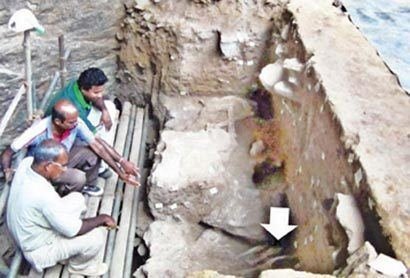🙏 ආයුබෝවන් (āyubōvan) 🙏
That’s how Sri Lankan greet someone. A very unique simple word means to say May you live long and be healthy!

Sri Lankans enjoy humble, and artistic lifestyle that entertains and touches their hearts with their centuries-old hospitality. Sri Lankan culture and values are based on a blend of traditional art, dance, and music. Its uniqueness and diversity have made it attractive to many people.
The recorded history of Sri Lanka dates back to twenty-five centuries and its earlier history goes back to the Indian epic “Ramayana”. Archaeological finds on human colonization in Sri Lanka can be found in the Balangoda area. These Balangoda people came to the island about 34,000 years ago and have been identified as hunters who lived in caves. These natural caves are rich in the ruins of prehistoric culture.
source

Archaeological evidence of the Iron Age in Sri Lanka was found in the Anuradhapura Fort, and antiquities dating back to the early Iron Age were excavated in 900 BC.
Around 500 BC, the period of Sri Lankan archeology developed a unique civilization. Among its achievements are cities, palaces, reservoirs, parks, temples, monasteries, monuments, and works of art that testify to the character, imagination, culture, philosophy, and faith of the people of Sri Lanka.
The Indo-Aryan people migrated from India around 400 BC and after mixing with these people, Buddhism was established to establish a Sinhala culture in Sri Lanka. The Mahavamsa, one of the most famous chronicles in Sri Lanka, provides a unique record in the history of Sri Lanka.
Would you believe that Sri Lanka has the oldest living human-planted tree in the world?
Yes, we do 😇
Check the Guinness world records if you don’t believe it. The Jaya Sri Maha Bodhi at Anuradhapura was planted there in 288 BC which mean to say that this great tree is 2300 years old 😲 It has so much of religious importance to the Sri Lankans.
Sri Lanka is a multi-religious and multi-ethnic country with about 69.1% of the population being Buddhist. The next most followed religion in Sri Lanka is Hinduism, which is practiced by about 7.1% of the population. Hinduism, gifted by India, also has a long and rich history in the country. Most Hindus are Tamils and the majority are from northern Sri Lanka as well as the eastern, western, and central regions. The Islamic community is about 7.6% and the followers of Christianity are about 6.2%.
Sri Lankan architecture exhibits a wide variety of architectural forms and designs. Buddhism BC Introduced to the island in the 3rd century, it had a significant impact on Sri Lankan architecture. In many cases, Sri Lankan art originated from religious beliefs and is represented in many forms, such as art, sculpture, and architecture. The most prominent feature of Sri Lankan art is the cave and temple paintings such as the murals at Sigiriya and the religious paintings found in the Dambulla temples and the Tooth Relic in Kandy. Other popular arts have been influenced by locals as well as foreigners. For example, traditional woodcrafts and pottery are found in the highlands, while Portuguese-inspired lacework and Indonesian-inspired batik stand out.
Sri Lanka consists of a variety of dance styles, such as classical, folk, and dance. There are three main types of dance in Sri Lanka. They are named Kandyan, western, and Sabaragamuwa.

Sri Lankan cuisine is mainly affected by South India, Indonesia, and the Netherlands. Rice is a staple and is usually consumed daily and can be found on any special occasion and is a favorite dish for spicy curries for lunch and dinner. There are many Sri Lankan dishes such as rice and curries. Sri Lankans also eat hoppers that can be found anywhere in Sri Lanka.
There are several prominent Hindu temples in the northern and eastern parts of the island. The majority of the population living in these areas are Tamils. Other communities in these areas were severely affected by the ethnic conflict during the LTTE conflict. Due to Roman Catholic and Protestant colonial heritage, many churches can be found along the southern coast. Buddhists inhabit all parts of the island, but especially along the southern, upcountry, and western coasts. Buddhists are the largest religious group in Sri Lanka.

link to Google! | Plus code: QVMP+XM Moratuwa | What3words: ///loopholes.notion.feel
Sinhalese speak Sinhala as their mother tongue and Tamils speak Tamil. English is also widely spoken. About 17 million people in Sri Lanka speak Sinhala and about 24% of the total population speaks Tamil. Both Tamil and Sinhala are the official languages.
I am proud to live in a country like Sri Lanka. It is the responsibility of every one of us to uphold cultural values in this beautiful country.
God Bless my country!
Thank you @hc-curator for organizing this contest, we all will learn many fact that we didn't know about other cultures and their history. I would like to invite @vishwara, @hasini, @bhagyaa & @inudi for this contest to showcase many historical values Sri Lanka has.
The End! 😎
#hcyourplace #contest #srilanka #steemexclusive #history #culture


Hi @virajherath
You explain it very well.
Thank you for participating in Context part # 1 :)
Downvoting a post can decrease pending rewards and make it less visible. Common reasons:
Submit
I'm glad you liked it..
Downvoting a post can decrease pending rewards and make it less visible. Common reasons:
Submit
Downvoting a post can decrease pending rewards and make it less visible. Common reasons:
Submit